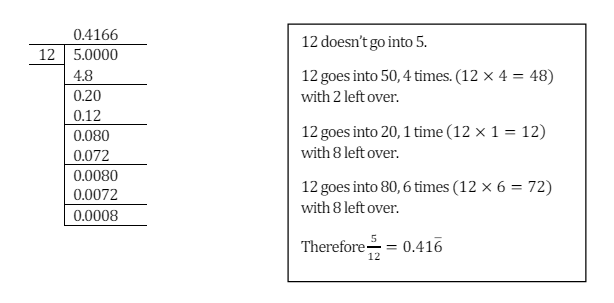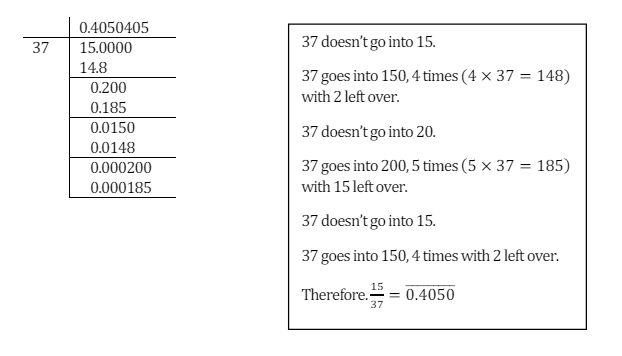Converting integers to base 2 is reasonably easy.
For example, what is 82 in base 2?
Think about powers of 2
Make ![]() the sum of powers of
the sum of powers of ![]() .
.
![]()
We follow the same approach for real numbers
Convert ![]() to base
to base ![]()
![]() the first number is 1
the first number is 1
![]() the second number is 1
the second number is 1
![]() the third number is 0
the third number is 0
![]() the fourth number is 0
the fourth number is 0
![]() the fifth number is 0
the fifth number is 0
![]() the sixth number is 1 and we have finished
the sixth number is 1 and we have finished
![]()
What about something like ![]() ?
?
The non-decimal part ![]()
![]() first number is zero
first number is zero
![]() second number is 1
second number is 1
![]() third number is 1
third number is 1
![]() fourth number is 1
fourth number is 1
![]() fifth number is 0
fifth number is 0
![]() sixth number is 0
sixth number is 0
We are back to where we started, so ![]()



